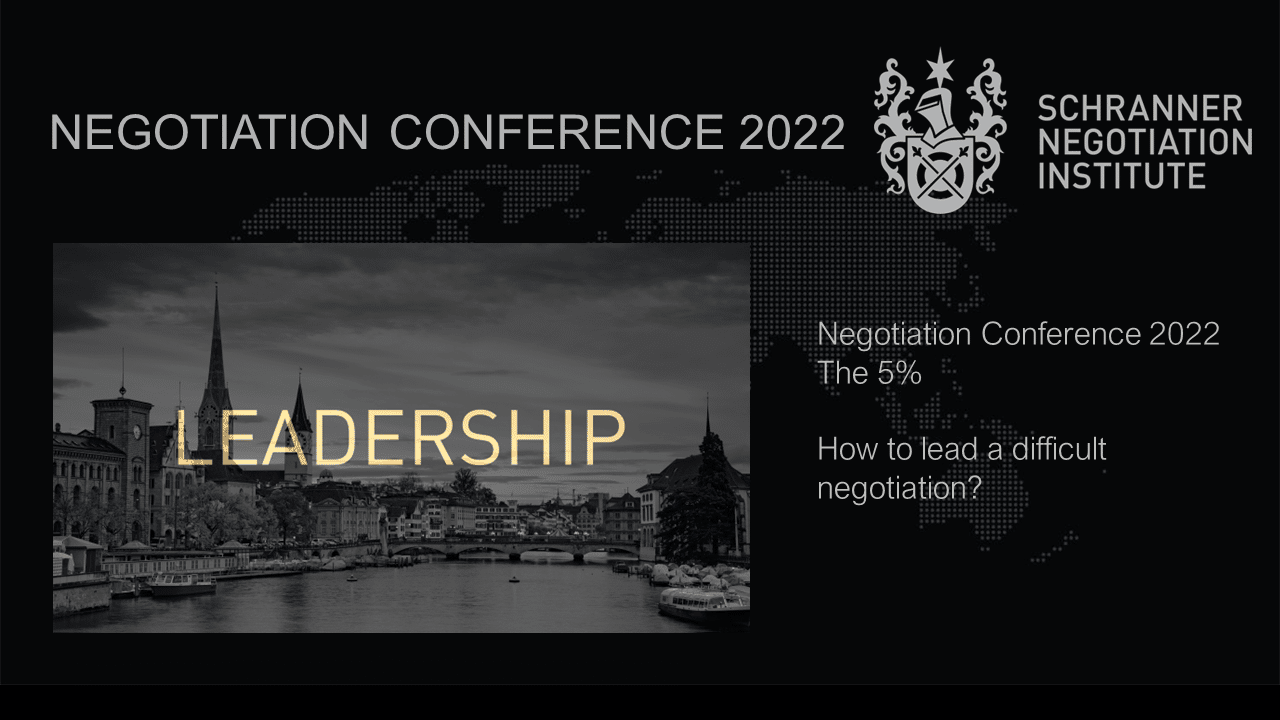Negotiation Conference 2022 – the high-profile event for business leaders!
The 5% – How to lead a difficult negotiation
The decision-making power in a negotiation remains with the Decision Maker: an individual or a committee. Their decision is final and overrules any made by the Negotiator or the Commander. Furthermore, they make the final decision and carry overall responsibility for it and the consequences.
Furthermore, within the negotiation process framework, the development of a negotiation strategy falls to the Decision Maker. The strategy-defining process should include the following hallmarks:
Strategic objectives
As part of a corporate vision, the Decision Maker must define strategic objectives and leave sufficient room for operational implementation. The company’s strategic objectives are generally clearly defined: e.g., growth in revenue or market share, increase in profit or savings, an increase of production value in low-wage countries, etc. Based on these objectives, the respective business unit (sales, procurement, etc.) is responsible for achieving them.
Maximum objective
The Decision Maker determines the maximum objective for a defined timeframe: e.g., 5% growth in the next quarter. That objective is often referred to as the “target,” which is the optimal goal for the company to reach. The maximum objective is communicated internally and linked to concrete target agreements within the respective business units.
Walk away position
Decision Makers determine the walk-away position, which is just below the minimum target. The minimum target defines a threshold (e.g., price, percentage level, etc.) after crossing which the Negotiator must break off the negotiation. Experience shows that determining the walk away position prior to escalation is critical. Surprisingly, it is often neglected.
Important: Define a specific walk away position and do not communicate it to the Negotiator – share a fictitious target instead. The opposing side might have informers in your company, so sharing the real walk-away-point internally could set you up for increased pressure.
Ethics and Compliance
As the Decision Maker, you should clearly define the No-Gos and stick to those.
Questioning milestones
Your negotiating teams must adhere to the milestones you have defined. If you tolerate any deviation, you will lose control of one of the most critical negotiation parameters: time!
Questioning priorities
Discussions regarding priorities usually start as soon the opposing party increases pressure. Keep in mind that as the Decision Maker, you define the strategy but are not part of the strategy. Therefore, never question the priorities of your negotiating teams. You set the strategy so that your negotiating teams have a framework to act within.
Questioning roles
Do not allow discussions around the assigned roles in your negotiating team – you make the decisions.
For more insights on leadership, watch our N-Espresso interview series with George Kohlrieser, the Distinguished Professor of Leadership and Organizational Behavior at IMD Business School.
Join us at the Negotiation Conference on October 6&7, 2022. Register here!
